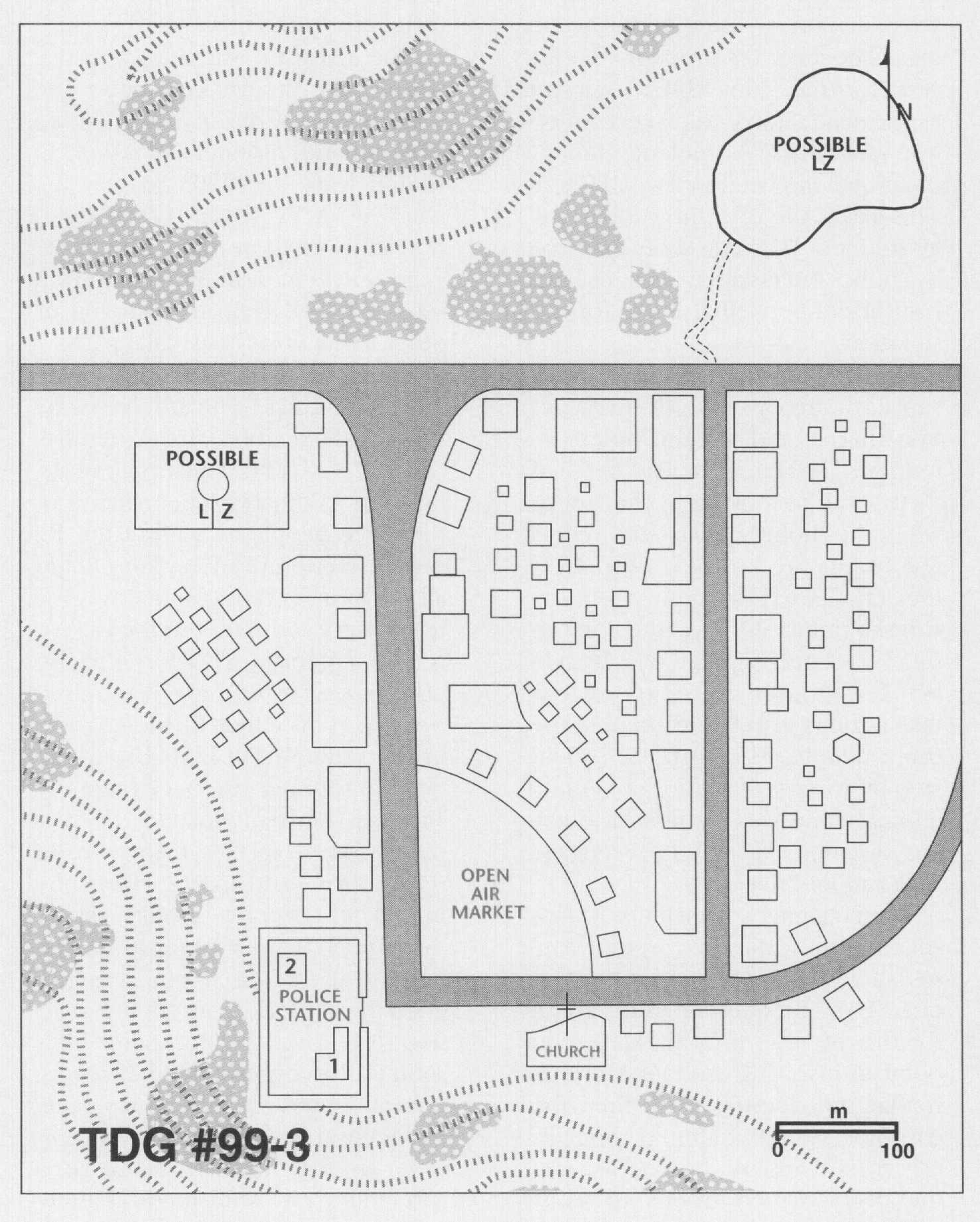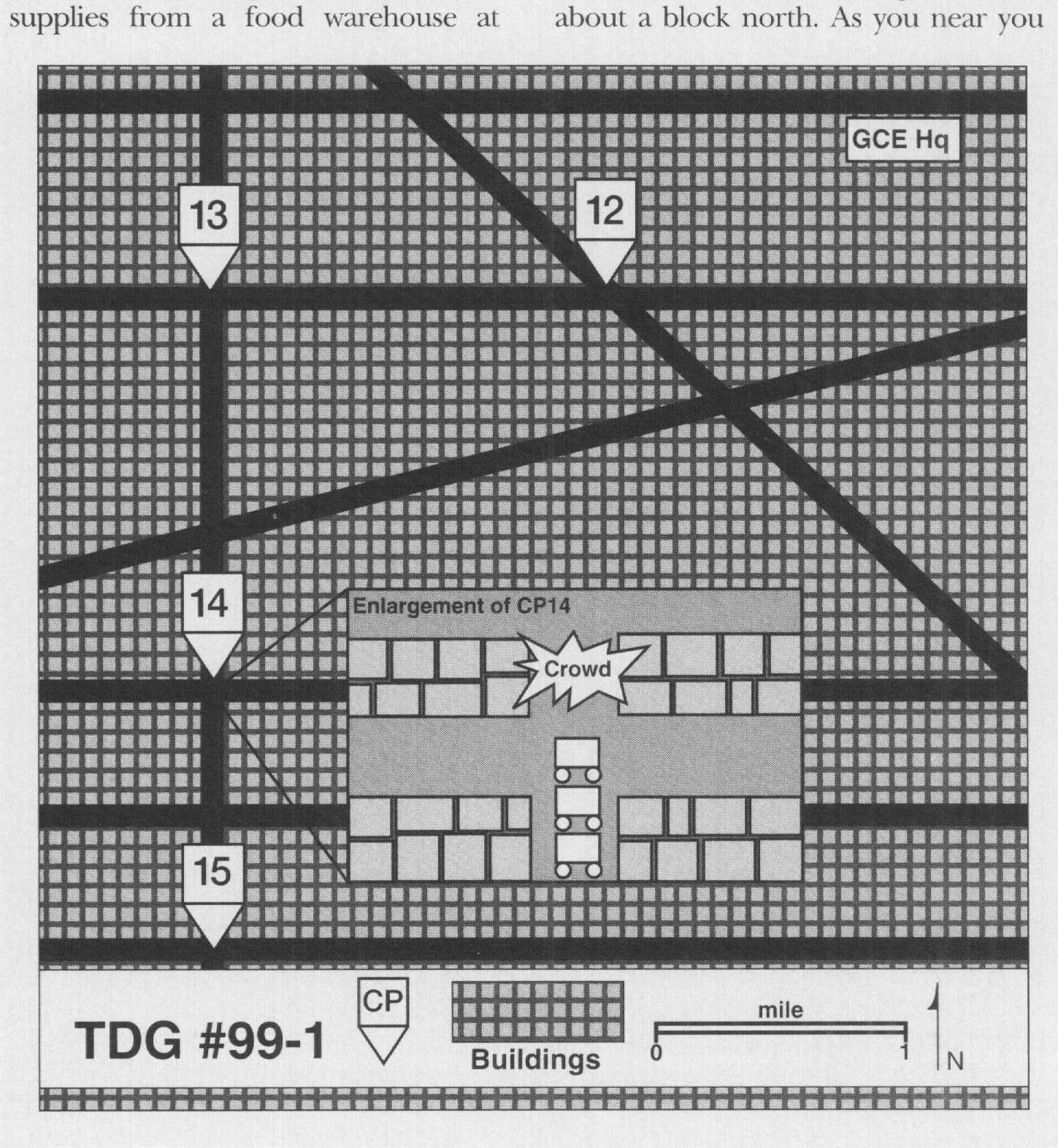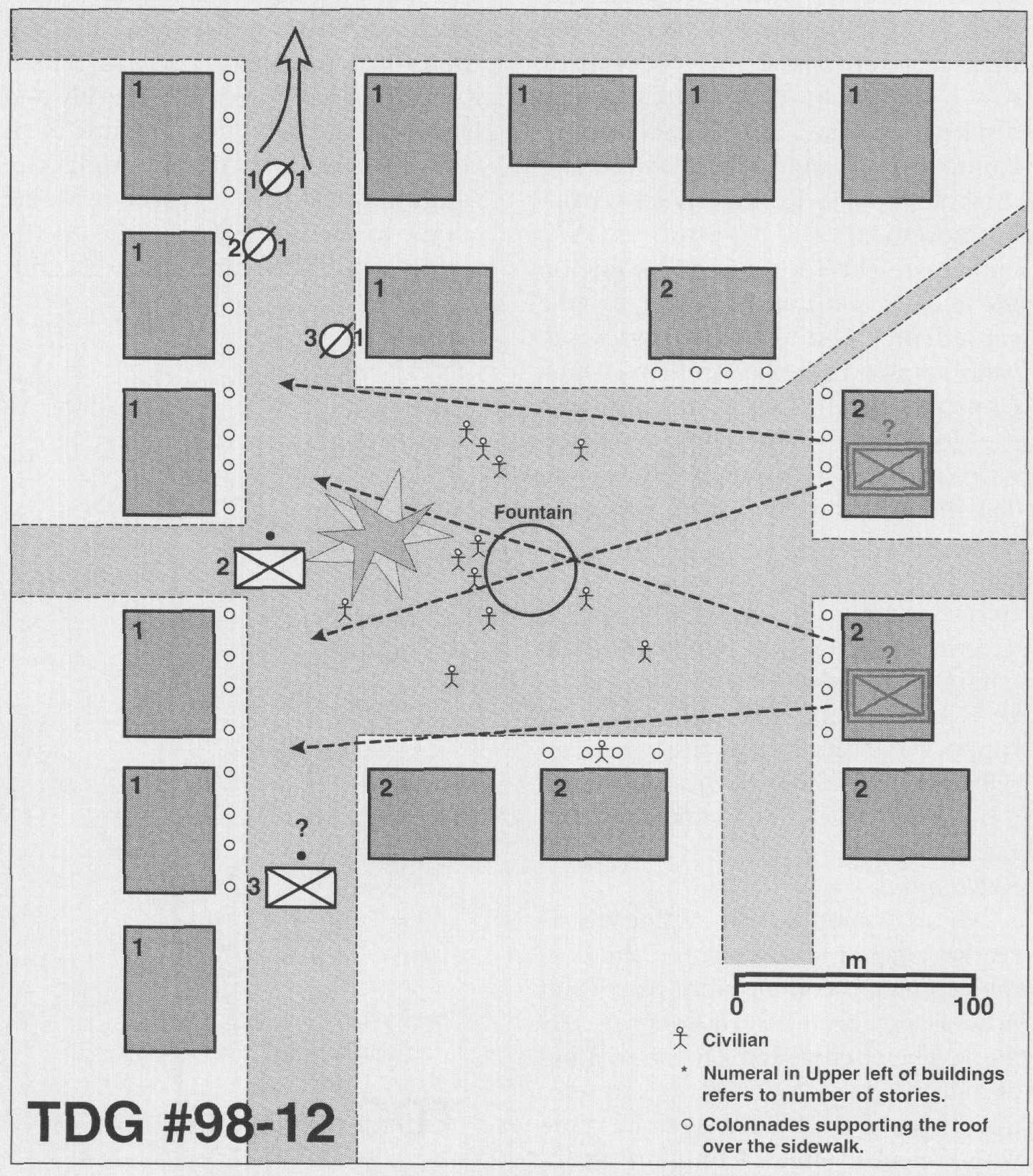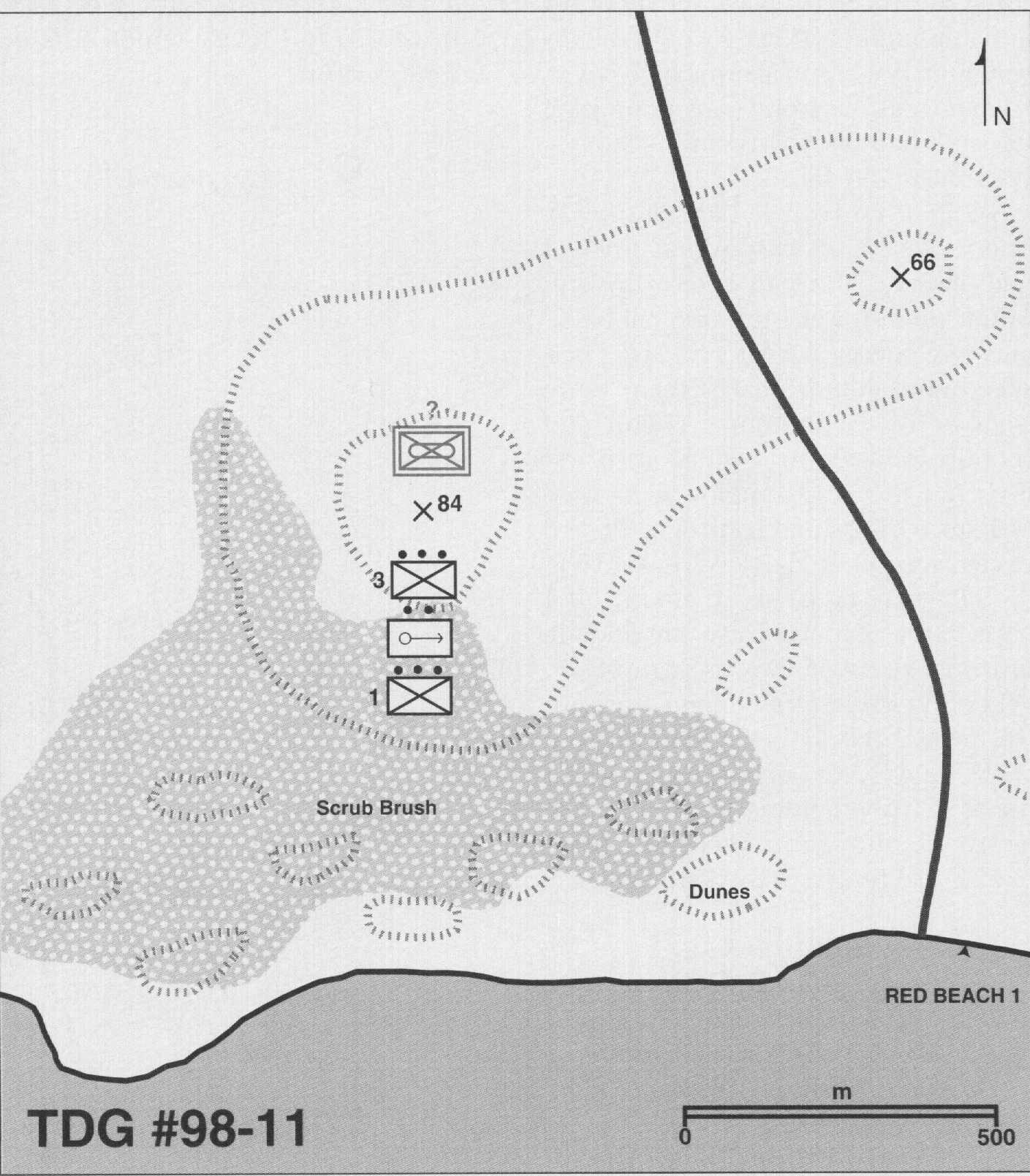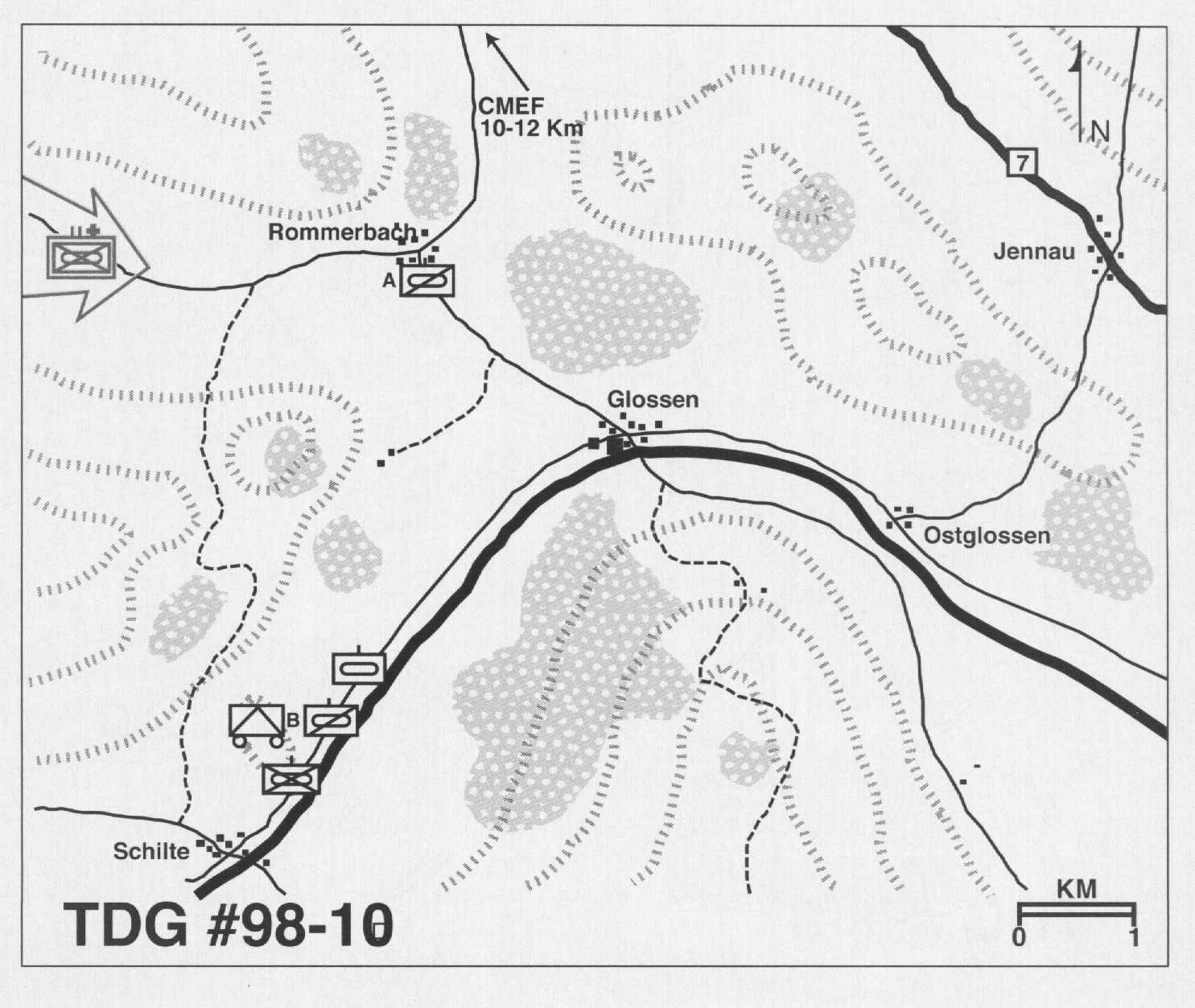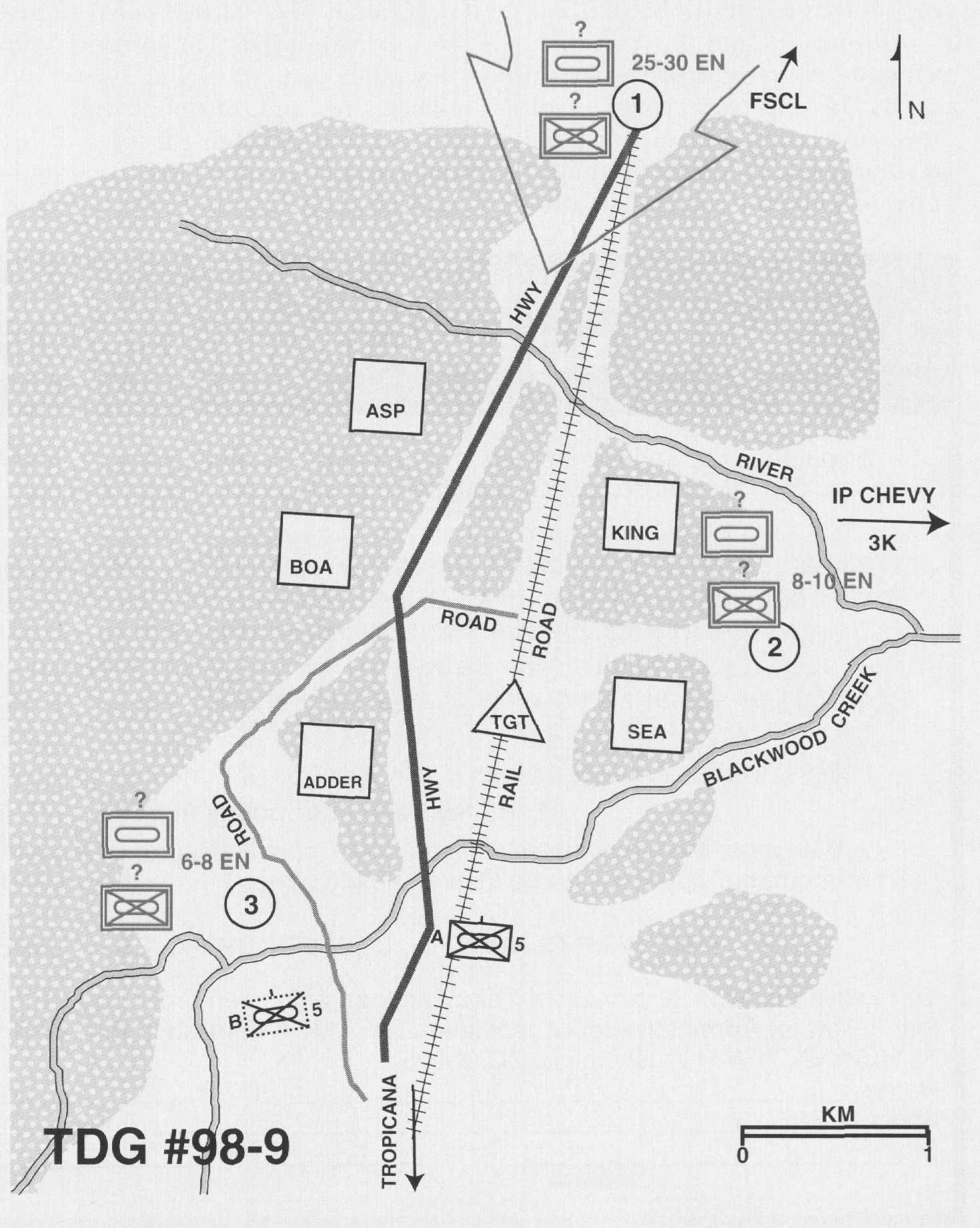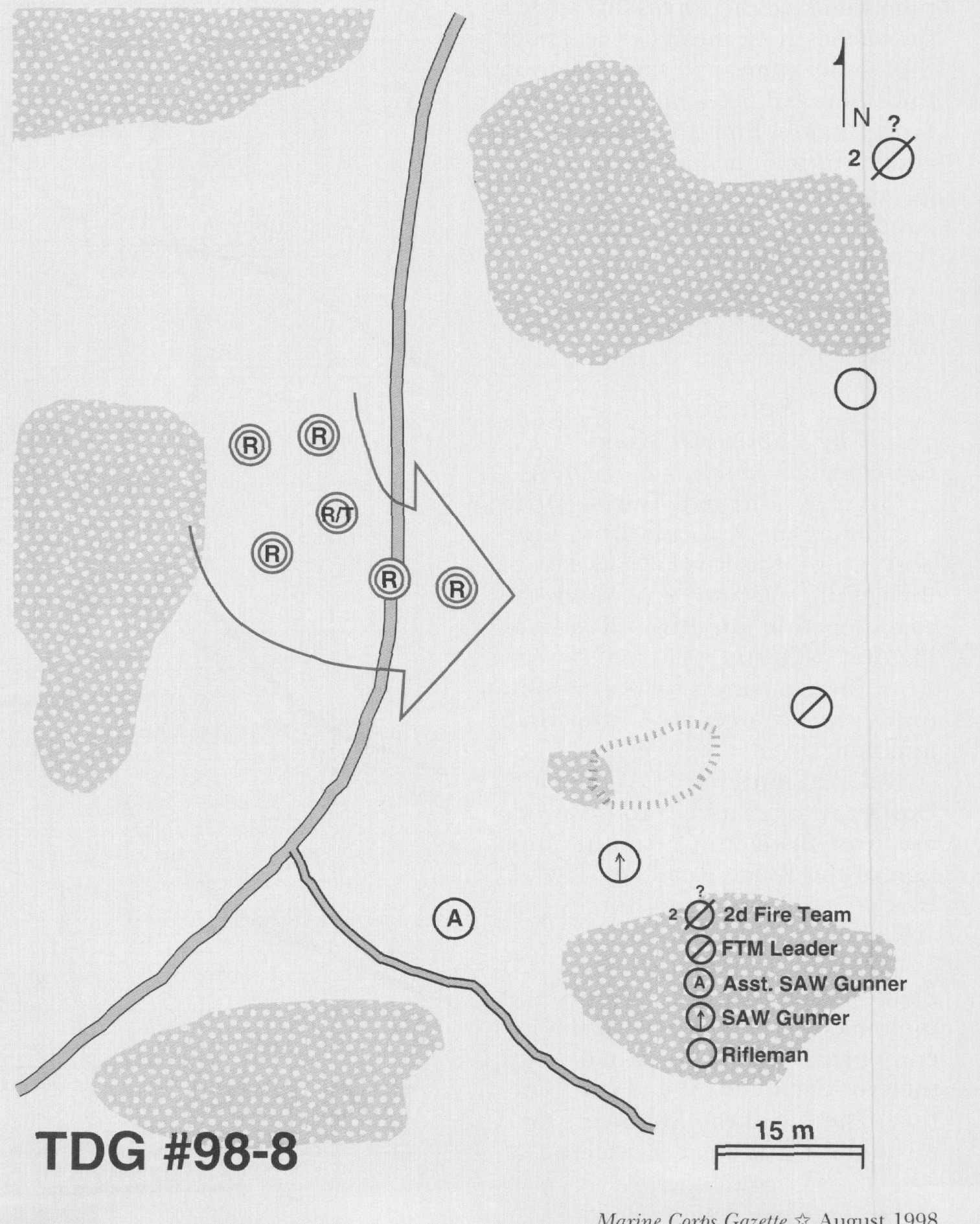By Capt Brendan B. McBreen
The great combat leaders throughout history have been successful because they possessed the essential skill of the commander: the ability to consistently make effective tactical decisions quickly and intuitively in the face of extreme stress and uncertainty. This skill is virtually ignored by tody’s Marine Corps education system. There is no vehicle to teach or evaluate tactical decisionmaking. A Marine leader’s decisionmaking ability, the essential skill of the commander, is acquired in a nonsystematic and unrecognized manner. The Marine Corps needs to train its leaders in decisionmaking skills, encourage constant practice, and then select commanders who possess master-level decisionmaking ability.
‘Ender’ and the Education of a Master
Andrew Wiggin, nicknamed “Ender,” is the main character in Orson Scott Card’s novel Ender’s Game. Selected for command as a child, Ender is placed in a military school. A curriculum of creative competition based on continuous wargames relentlessly develops the students’ competitive skills and decisionmaking abilities. Eventually, Ender acquires an extraordinary ability to recognize the scope of any challenge, quickly grasp its key elements, create a solution, and lead his soldiers to victory. In the final chapter, Ender, displaying the decisionmaking skills wrought from years of preparation, wins his first real battle.
In the Marine Corps today, who is our Ender? How was he trained? What schools? Where do I go to learn what he knows? Where does the Marine Corps teach decisionmaking?
There is no school, no course, no seminar. Leaders in today’s Marine Corps do not make enough tactical decisions to develop a decisionmaking mastery. The Marine Corps needs to recognize tactical decisionmaking as the essential skill of the commander and establish a vigorous decisionmaking training regimen.
Plan, Decide, and Execute
The planning process is high religion in the Marine Corps. The Marine Corps Planning Process is used by commanders and staffs to develop plans to execute missions. In this model, a staff proposes a number of options to the commander, who then selects a course of action, which the staff develops into a plan. In the past few years, numerous authors have argued that the emphasis placed on this standard planning process provides leaders with an incomplete model. The analytical planning process works when staffs have the time to develop an optimized plan, but the model is much less useful, and some would say dangerously flawed, when key decisions are needed under time pressure.
Decisionmaking, not planning, is the essential skill of the commander. Once a planned operation starts to unfold, combat decisionmaking, the second activity in the plan-decide-execute cycle, comes to the forefront. In the stress and time pressure of combat, the planning process is unworkable, and leaders need another decisionmaking model. Dr. Gary Klein, who has studied expert decisionmakers in other fields, concludes that effective decisionmakers use experience to rapidly estimate a situation and decide what is feasible.
Research . . . has shown that decisionmakers can use . . . experience to size up the situation . . . and identify the typical way of responding. Therefore, skilled decisionmakers may never have to consider more than one option.
Klein’s research points out that the essential factor is developing effective decisionmaking skills is depth of experience.
Experienced decisionmakers know how to deal with battlefield uncertainty. Warfighting doctrine holds that uncertainty is all-pervasive and inevitable, and that Marine leaders must learn to fight effectively despite uncertainty. As Dr. Klein and Maj John F. Schmitt, USMCR, noted in their excellent article “Fighting in the Fog: Dealing With Battlefield Uncertainty” (MCG, Aug96), “Effective commanders seem to exhibit a higher-than-normal tolerance for uncertainty . . .” Effective decisionmaking experience requires that a commander prepare, recognize, reduce, and manage uncertainty.
Some decisionmaking proficiency is not enough. Mastery, or expert knowledge, is needed. The mark of a master is intuition, the ability to perceive something without conscious reasoning. Intuition is a result of wide experience being internalized as a well-organized body of knowledge. Maj Jose A. Picart, USA, contends that true experts have four characteristics: ability to quickly impose meaning on a complex pattern, ability to solve mental tasks at extraordinary speed, ability to interpret and find meaning to information, and ability to focus attention and store in memory. Since combat is a time competitive contest, each of these traits is essential in a skilled battlefield commander.
The Marine Corps knows how to plan and how to teach planning. The challenge for the Marine Corps is how to teach decisionmaking. Leaders need to be taught the tools and techniques of combat decisionmaking. They then need the experience of thousands of decisions. The average number of decisions a future commander makes in a year must be accelerated by a factor of 10 or more to begin to reach the minimum needed for the development of masters. The Marine Corps needs to identify those leaders with true master-level intuitive decisionmaking skill. There is a dynamic relationship between intuitive decisionmaking skill and deliberate planning skill. Commanders who can make effective decisions under stress, uncertainty, and time limitations, create better plans. Intuitive decisions can result from executing well-conceived deliberate plans.
Decisionmaking Training Today
Marine leaders serving in the FMF today have the opportunity to make hundreds of tactical decisions a year. Field exercises, deployments, and real-world operations are exactly the type of experiences that allow leaders to develop their decisionmaking skills. Well-run unit professional military education (PME) can focus on decisionmaking. Limitations, however-canned scenarios, the absence of a willful enemy, lack of command emphasis, and others-restrict the number of decisions a leader might make. The opportunity is wasted in far too many units.
Leaders serving in “B” billets have far fewer opportunities to make tactical decisions. Although some Marines follow programs of selfstudy and some unit leaders implement decisionmaking PME, primary duties restrict most additional decisionmaking training.
Marine Corps Institute courses, designed to parallel the formal schools, rarely attempt to cover tactical decisionmaking. An exception is the excellent Warfighting 7400 series, which requires a number of tactical decisions.
Most formal schools do include some decisionmaking training on the periphery of the curriculum. Tactical decision games, sand table exercises, battle studies, and planning exercises all contribute to decisionmaking skill. The main effort, however is placed on the Marine Corps Planning Process. The last step for most student planning exercises is the briefing. Very few plans are executed against a willful enemy. This is a lost opportunity, for execution of a plan is the point where planning stops, decisionmaking begins, and the relationship between these phases is made clearer. In the Marine Corps school system, training to plan stops short of training to fight.
Developing Master Decisionmakers
The Marine Corps University, charged with educating the leaders of the Marine Corps, is the only organization capable of institutionalizing decisionmaking education.
The Commandant’s 1995 Planning Guidance defined one of the goals for command and control: “We must reach and execute effective military decisions faster than our adversaries.” A parallel goal was set for the Commandant’s PME effort: “. . . PME . . . should be oriented toward the development of judgment (and) decisionmaking skills . . .” The solutions in both areas is not new computers or other equipment. The solution is training:
Teach Tactical Decisionmaking in School. The Harvard Business School uses case studies to teach business decisionmaking. After 2 years, each student is intimately familiar with 240 business cases. An officer who fights 240 battles in 2 years would be well prepared for combat. We need to put our future commanders in situations where they repeatedly need to make decisions. A display of decisionmaking competence should be a requirement to graduate. Decisionmaking training requires simulated combat-battle studies, decision games, simulations, and exercises-where leaders make multiple decisions under pressure. Decisionmaking training should not be a brief 1week package, but integrated into every aspect of the curriculum. All plans produced in planning exercises should be executed against a willful enemy. Feedback is vitally import.ant because a lack of feedback may teach decisionmakers poor lessons. A leader is practicing his profession if he makes 100 tactical decisions during 9 months of school. For mastery however, he needs the experience of 1,000 tactical decisions.
Rewrite the Marine Corps Institute Courses. Paralleling the formal schools, these courses need to eliminate the multiple-choice format, emphasize decisionmaking training, and provide the student hundreds of opportunities to make and justify decisions.
Establish an On-Line Warfighting Web Page. Civilian wargamers around the country fight simulations against each other, maintain rankings, and trade tactical insights. The Marine Corps should maintain a 24-hour battlespace where leaders can fight each other on-line.
Fund a Decisionmaking Seminar Mobile Training Team. A 21/2-day decisionmaking seminar could consist of 8 hours of planning, 8 hours of fighting, representing 2 or 3 days of combat and the potential for hundreds of decisions, and 4 hours of debrief. A Mobile Training Team 2week course could fight four separate battles. At a formal school, this decisionmaking seminar model could be run continuously.
Screen Instructor Billets. Some studies have shown that second only to command, teaching develops future leaders. If instructor duty is second only to command experience, then instructor selection should be second only to command selection. Selecting instructors with intuitive decisionmaking ability who will spur students in their own decisionmaking development is an important step in institutionalizing decisionmaking excellence.
Select Master Decisionmakers. Decisionmaking ability should be formally evaluated. This would create an environment that encourages long-term study and self-improvement. If the Marine Corps wants to develop true decisionmaking masters, then it needs to identify these leaders, mentor them, train them rigorously, and assign them to appropriate billets. Warfare screens good leaders from bad without an appeal process. The Marine Corps should do no less.
How Does a Leader Develop His Own Decisionmaking Skills?
The Marine Corps can and will teach leaders decisionmaking techniques, but only those who have invested heavily in their own self-development will become expert decisionmakers.
Train in the FMF. Deployments and real-world contingencies allow leaders to make real world decisions, gain valuable experience and receive immediate feedback.
Train Your Subordinates. In operating units, leaders train leaders. Individual PME, unit training, and unit PME should all focus on decisionmaking training.
Train Yourself Knowledge of war is only acquired through the study of war. Individual study, from the Commandant’s Reading List, to military journals, to books on tape, should focus on command in battle and the decisions of commanders throughout history.
Train With Tactical Decision Games (TDGs). The Marine Corps Gazette should be used for unit PME and leader training. A unit binder of TDGs should be available for leaders to use.
Train With Simulations. Commercial computer wargames are a powerful tool to teach decisionmaking. Simulations allow a leader to execute thousands of decisions in a time compressed manner, sometimes fighting a simulated week in the course of a single day. Simulations act as an excellent catalyst for tactical discussions. Simulations accurately re-create historical battles, allowing the player to examine the challenges faced by the real life commanders-an excellent method for studying military history. Tactical lessons are learned by doing. Players learn to experiment, recognize patterns, and to develop simple plans with good probabilities of success. Simulations are especially helpful for practicing how to prepare, recognize, reduce, and manage uncertainty.
Conclusion
To be successful in combat, the Marine Corps needs commanders who are expert decisionmakers, who can make effective decisions under extreme stress and uncertainty. The single most important factor in developing expert decisionmakers is experience derived from constant, directed practice. The Marine Corps currently trains leaders to plan. It needs a formalized program to train leaders to fight-to make decisions under pressure. Only when tactical decisionmaking is the training focus of Marine leaders preparing for combat will we produce the Enders of the future and maximize the combat potential of the Marine Corps.
Since April 1990 the Gazette has included a tactical decision game in every issue-a total of 97 to date. Combined with their solutions which rome 2 months later, TDG,s are, indeed, a valuable resource for training in tactical decisionmaking.
Armor, the “professional development bulletin” (really it’s an excellent, highly professional journal) published bimonthly by the U.S. Army Armor Center at Fort Knox, began a promising Tactical Vignette Series in its Sep-Oct97 issue. Solutions follow in the second subsequent isue, just as they do in Gazette games. The Gazette’s board of tactical experts recommends them to all Marines.
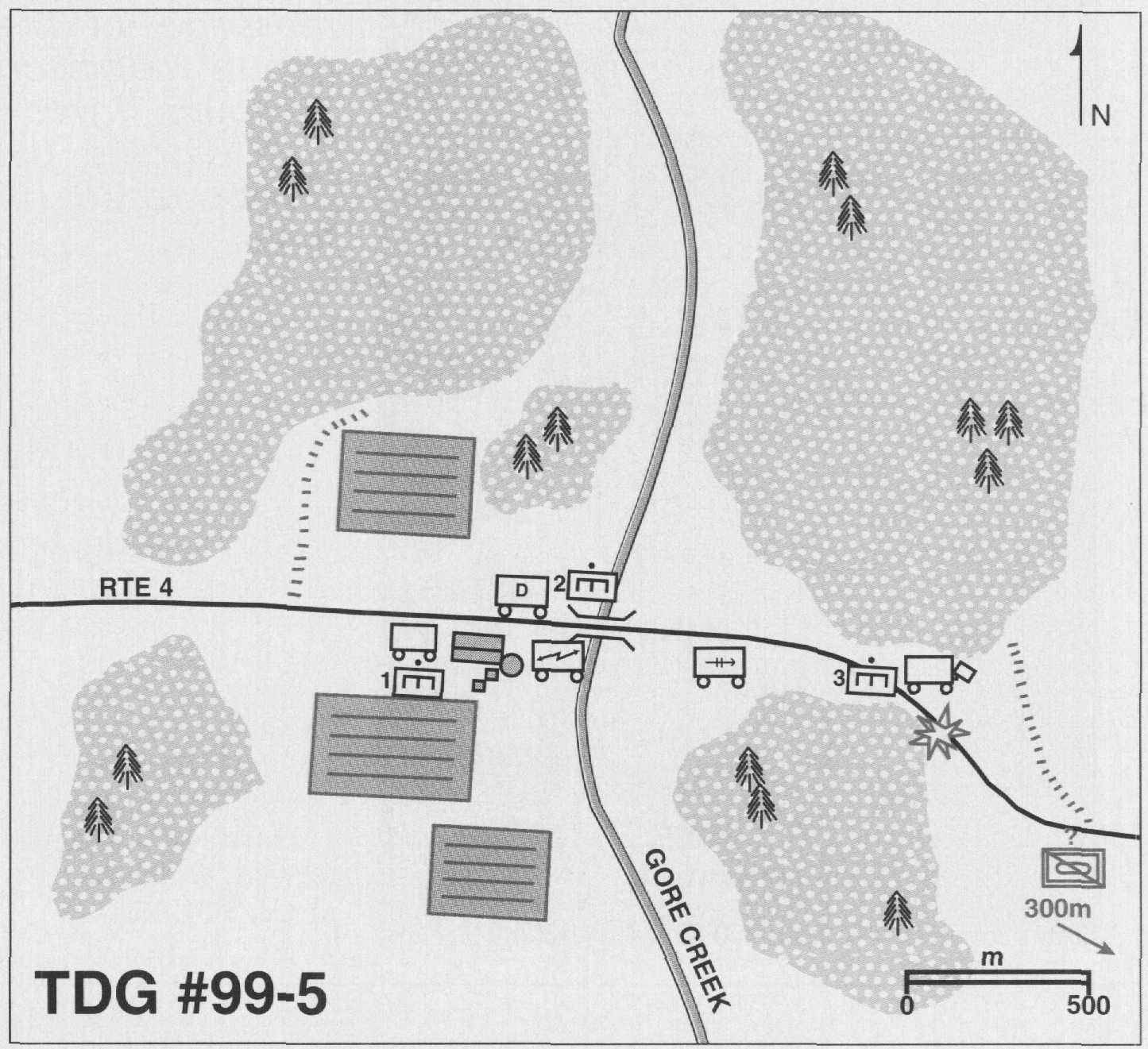 You are the commander of a combat engineer detachment. In preparation for an upcoming offensive, you have been tasked with mobility enhancement operations along a stretch of Rte. 4, to include repairing a blown bridge across Gore Creek, a 20-meter-wide, bolder-strewn, moderately flowing watercourse. You will be operating in the security area, forward of the main battle positions, protected by mobile security forces. The road repair consists primarily of filling in shell craters and clearing fallen trees. Your detachment has just completed the bridge repair and reinforcement, making the bridge passable once again for light traffic.
You are the commander of a combat engineer detachment. In preparation for an upcoming offensive, you have been tasked with mobility enhancement operations along a stretch of Rte. 4, to include repairing a blown bridge across Gore Creek, a 20-meter-wide, bolder-strewn, moderately flowing watercourse. You will be operating in the security area, forward of the main battle positions, protected by mobile security forces. The road repair consists primarily of filling in shell craters and clearing fallen trees. Your detachment has just completed the bridge repair and reinforcement, making the bridge passable once again for light traffic.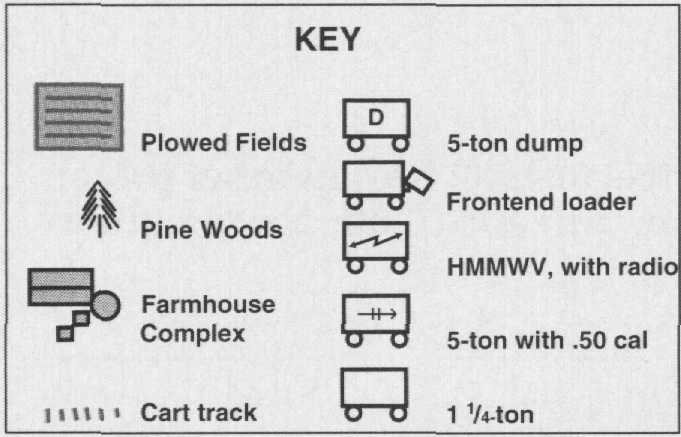 Requirement
Requirement


